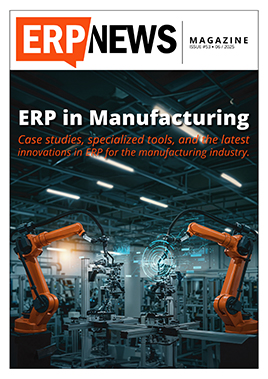As we head into 2022, enterprises can be sure that the influx of digital technologies will continue to grow aggressively. Of course, the same could have been said a few years back too. However, what makes 2022 different from any other point in history is that there’s more evidence than ever before that digital disruption is here to stay. More enterprises are advocating for a culture of open innovation to permeate across the organization – from glass cabins of experienced C-suite leaders to the induction rooms where young candidates wait to start their careers.

Finance transformation: Why is it a catch 22 situation?
At the front and center of these journeys is the finance function. Today, more enterprises feel the pressure of achieving finance transformation to the point of seeing measurable ROI. And they are in a catch 22 situation. On the one side, CFOs and their teams need digital firepower more than any other team, considering the sheer amount of daily paperwork. But, on the other side, their workflows require a high degree of accuracy and deep-dive due diligence, given the security and financial risks.
But every CFO has the same mindset while taking that first step towards digital transformation.
For many, automating key finance workflows to reduce manual efforts, increase process accuracy, and ensure compliance is a top priority. Others may need data-rich actionable insights to detect inefficiencies and unearth opportunities to grow the business. In some cases, it’s all about uncomplicating a multi-vendor IT ecosystem to get a 360-degree view of the enterprise’s financial health.
There’s one goal, though, which they all CFOs have in common – to make technology more people-focused.
If it’s not about the people, then what good is digital?
Digital tools have a major impact on enterprises because they are changing the way people work. In the late 90s or even the early 2000s, the business user took a backseat to technology. In several cases, innovation was a one-way street with rigid technology solutions to counter problems. But with 2022 around the corner, the narrative has been flipped. Now, the success of any modernization initiative depends on how easily and quickly people can become familiar with the tools that enable digitalization.
Also, digital tools have already engulfed the lives of the average business user. With more millennials and Gen-Z employees across the finance function, there’s a lower tolerance towards poor UI or limited feature experiences.
For instance, finance professionals can use RPA workflows to automate compliance management to ensure adherence. But with intelligent AI-driven flexibility, they can also monitor and adapt to any changes in local regulations – giving them more control and confidence over the process. Or let’s say that finance users have access to detailed reports but are left without an inbuilt mechanism to enable easy sharing with the right stakeholder. It’s yet another case of a job half-done, which may demotivate finance teams from using new tools.
Tips to improve digital adoption in the finance team
- Recognize and resolve any cultural resistance through awareness programs
- Communicate benefits of new tool adoption in a streamlined and consistent manner
- Ensure top management buy-in to create a trickle effect
- Create robust support and maintenance workflows to quickly resolve user frustration
4 top-priority areas for CFOs to increase digital adoption in 2022
Budgeting
CFOs don’t need to be told twice about the importance of budget planning when it concerns mission-critical imperatives. Historically, it has been a rigid annual strategy that doesn’t leave any room for flexibility. But in 2022, this can be a blow to the enterprise’s overall ability to adapt and evolve as per dynamic market dynamics. CFOs may want to look into a zero-based budgeting approach to deploy and measure new digital imperatives.
Digital-focused upskilling
Skill gaps inhibit the finance team from maximizing their potential – especially in hybrid work environments. So, a digital transformation-focused upskilling program is crucial to bring them up to speed. And since technology literacy isn’t what it used to be, CFOs must also be on the lookout for talent who can be easily fast-tracked to learn new systems and workflows.
Data analytics and beyond
Data plays multiple roles for the CFO and their teams. It’s a journalist who reports on the facts as they are and a market analyst who gives intelligent predictions/ Plus, it’s a finance whiz who can carry out error-free tasks in a matter of seconds! Data visualization has also come a long way to offer a precise 360-degree view of individual components of any finance process. With 2022 holding the promise of smarter self-learning algorithms, driven by AI, ML, and NLP technologies, data will keep rising in prominence for CFOs.
Performance monitoring
Much like the digital strategy, getting the finance team to maximize digital tools is a journey, as well. Making sure they move past the starting line in a unified manner is just step one. CFOs should then continuously monitor key processes like accounts payable/ receivable, cash flow, etc. to identify KPI improvements. They should also assess software usage trends in comparison to employee productivity metrics and check whether going digital is bearing dividends.
In conclusion
Accidentally (or indifferently) nurturing bad digital experiences is just as bad as delaying the transformation. CFOs should be mindful that employees are aware that choices are available to switch tools. So, even if enterprises have valid reasons for being unable to replace existing ones, that will not make a difference to employees. The modern user simply expects better from their device or application experiences.
Now, as future-ready as the finance teams ought to be, the current reality is that many are still facing spreadsheet blues. This function is yet to reach any semblance of digital maturity as we approach the end of 2021. But one thing’s for sure – it’s that 2022 will see a bigger uptick in finance transformation based on the fact that employees won’t settle for anything less!







